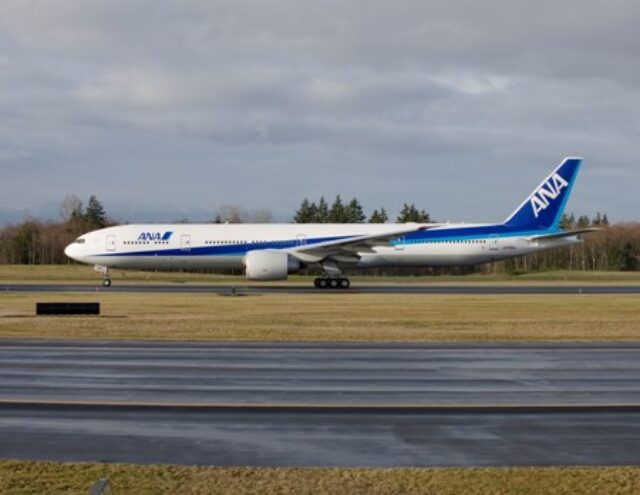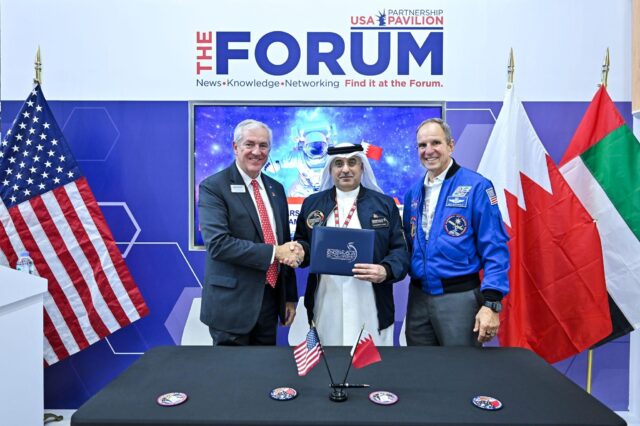Dutch F-35A shared classified data in real-time during Ramstein Flag
April 22, 2025

The F-35’s advanced sensors and onboard systems can work together to detect, track, and defeat threats in real-time. The seamless integration of targeting data enables a networked approach to defence. A formation of F-35s can seamlessly share their sensor picture using the F-35’s own Multifunction Advanced Datalink (MADL), giving their pilots unmatched situational awareness. Precise targeting data can then be passed to other air and missile defence systems.
By providing these advanced capabilities, the F-35 promises to multiply ‘The Power of Partnership’, potentially unlocking the full potential of allied partners’ defence capabilities and ultimately strengthening European security.
But up to now, the F-35A’s ability to pass data to other assets has been severely constrained by the demands of low observability. This has limited what datalinks can be used, and has required the use of dedicated gateways, such as the E-11 BACN. Gateways, equipment and techniques have been developed to allow US F-35s to pass data to other US force elements, including targeting information for (for example) HIMARS.
But this capability has not been available to other F-35 operators, hitherto.
That started to change in December 2024, with Project Deimos, which saw a Lockheed-operated F-35, flying from Fort Worth, shared live classified data with the British Nexus command-and-control system (operating in the UK’s Rapid Capabilities Office lab at Farnborough) using a new Skunk Works’ Open Systems Gateway. This marked the first time that an F-35 had shared this kind of data with a non-American C2 system.
During Exercise Ramstein Flag a Lockheed Martin Skunk Works’ Open Systems Gateway (OSG) was used to allow Royal Netherlands Air Force F-35As to pass targeting data via the Multifunction Advanced Datalink (MADL) into the Dutch Keystone command and control system. This was the first time that the Skunk Works’ Open Systems Gateway was operated outside the USA.
The gateway was reportedly “an evolution from Project Missouri,” which was a gateway experiment dating back to 2013 that was developed to connect the F-35 and F-22. It used the same architecture and technology, and is ‘aircraft type agnostic’ and is capable of being leveraged to link any platform/sensor/shooter, though attention is currently focused on the F-35.
For the real-time, live-fly communications gateway demonstration during Ramstein Flag, the Royal Netherlands Air Force F-35s flew in a simulated Anti-Access Area Denial (A2/AD) environment and detected, identified, and used MADL and the new gateway to pass targeting data on multiple simulated ground effectors (a grouping of Surface-to-Air Missile systems) to a ground-based rocket artillery platform, via the Dutch ‘Keystone’ C2 system. This allowed the targets to be engaged in a process that was executed in a matter of minutes from start to finish, destroying the targets within minutes of detection.
It was the first time the system had been operated outside the US, and marked a significant milestone in the development of multi-domain operations. It was taken as showcasing the F-35’s ability to seamlessly integrate with international partners’ C2 systems.
OJ Sanchez, the Vice President and General Manager of the Lockheed Martin Skunk Works said that: “The Ramstein Flag demonstration is a breakthrough in multi-domain operations, emphasizing the F-35’s ability to seamlessly integrate with our international partners’ C2 systems. This achievement is a testament to the strength of our partnerships with the RNLAF and USAFE-AFAFRICA. Lockheed Martin is accelerating delivery of novel MDO capabilities that enhance the effectiveness of our allies’ F-35 fleets to ensure peace through allied strength.”
Lockheed Martin has said that the Skunk Works’ commitment to Open Systems Architecture (OSA) is a critical component in facilitating air dominance and in enhancing F-35 interoperability. The company insists that Lockheed Martin Skunk Works’ Open Systems Gateway will enable seamless integration with international F-35 partners’ individual C2 environments.
Concerns about US control over the F-35 (especially its vulnerability to US control of ALIS/ODIN and to US control over mission data) have been exacerbated since the Trump administration took office. The development of a means of allowing NATO F-35s to pass data to their own national C2 systems may help to defuse some of these concerns, enabling seamless interoperability and greater co-operation between allied nations. The F-35 is the de facto cornerstone of combat air power for eight NATO nations, with seven more waiting for deliveries. Outside NATO, the type serves with four more allied nations, while Singapore is waiting for its first aircraft.
Lockheed Martin hopes that the F-35 will underpin a robust and integrated air defence capability across NATO, enhancing co-operation and regional stability and allowing “the US and its allies to continue to own the skies for decades to come.”
















